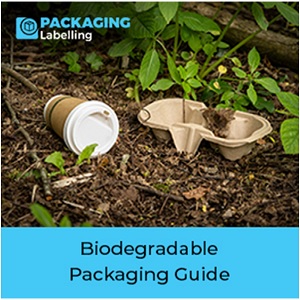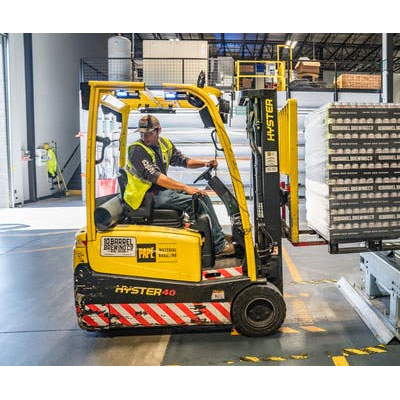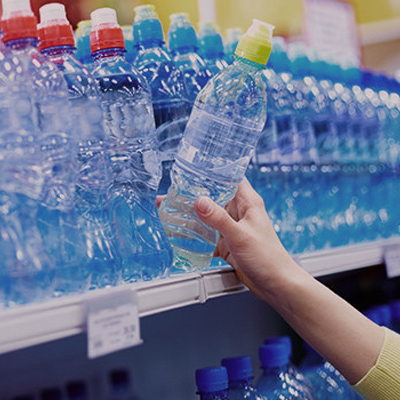Biodegradable Packaging Guide

Solid waste is broken down by microorganisms like bacteria and fungi during the biodegradation process. The solid waste must be biodegradable within a year and not pollute the environment while it is decomposing in order to qualify as biodegradable.
For biodegradation to occur, the right combination of microbes, heat, oxygen, moisture, and sunshine must be present, whether it's at home or in an industrial facility. The rate at which garbage decomposes changes when any one of these factors does. Industrial sites are designed to handle huge volumes of waste in an efficient manner.
Biodegradable packaging—what is it?
Any type of packaging that will naturally break down and degrade is considered biodegradable.
Biodegradable substances
Materials for biodegradable packaging are often made of biopolymers, or organic substances present in living things like cellulose and proteins. These proteins make it easier and have less of an adverse effect on the environment for the material to disintegrate. In recent years, biopolymers have been used to produce biodegradable and recyclable packaging materials, including shipping containers and materials for transit protection.
Biodegradable packaging has weak molecular structures and degrades quickly, such as paper and cellulose.
What kinds of packaging are biodegradable?
There are many different biodegradable packaging types, but not all of them are appropriate for packing food. There are several types of biodegradable packaging currently in use, including:
- Hemp: Made from the cannabis plant, hemp is robust, adaptable, and highly biodegradable. Hemp is still an expensive source of bio-plastics, and its polymerized form is not yet offered commercially.
- Paper: One of the earliest and most traditional types of biodegradable packaging is paper. It is easily and effectively recyclable and biodegrades quickly. Paper is not suitable for many food packaging applications because it does not offer the same level of protection or sealing as other types of packaging.
- PLA: Although PLA is bio-based and can be molded into packaging like traditional plastic, it decomposes slowly, even in commercial composters.
- Cellulose: When stored, plant-based packaging discolors easily and can't provide a durable barrier or shelf-life for food products. It also degrades very quickly.
- Seaweed: A seaweed-based material is highly biodegradable and excellent for short-term packaging, but it is unstable and unsuitable for packing, transporting, and storing food.
Benefits of Biodegradable Packaging
The benefits of using biodegradable plastic packaging are obvious for the planet's future, the environment, and the sustainability of the food industry at scale:
Encourages farming
It is driven by biodegradable food packaging, which recycles packaging waste into compost to improve farming and food production.
Healthier alternatives
All types of food and food products can be packaged in a safe and healthy manner using biodegradable materials because they are natural and nontoxic.
It decreases waste
The ability of biodegradable packaging to lower overall waste in the food business is its most significant advantage. Biodegradable food packaging completely and naturally breaks down, as opposed to throwing away masses of plastic that will sit in landfills for years.
Within a certain period of time, it returns to nature.
Packaging that has been certified as biodegradable is made to break down under controlled circumstances over a set amount of time. In household compost bins, certified biodegradable packaging normally decomposes in a year, and in commercial composting facilities, it does so in three to six months.
A smaller carbon footprint
Biodegradable packaging materials are better for the environment because they are manufactured from recycled materials rather than chemicals and plastics.
Because of the packaging's eco-friendliness, fewer wasteful materials are produced, and fewer resources are consumed. Both initiatives contribute to reducing the human carbon footprint while upholding strict environmental regulations.
Zero-harm Plastics
In the past, hazardous plastics have frequently been used for packaging and transportation, many of which are petroleum-based and have caused environmental damage. Non-sustainable petrochemical materials, such as plastics made from petroleum, require a lot of energy and resources. In landfills, on streets, in parks, and even in waterways, these items are frequently found as trash. Businesses can reduce littering problems by using eco-friendly packaging, which reduces plastic usage.
Easily Disposable
Businesses should use recyclable or biodegradable packaging and shipping materials regardless of the type they choose to use. It is easier to dispose of shipping materials since eco-friendly packaging is made of biodegradable materials. After the package has served its purpose, it doesn't require as many resources to break it down. Customers who choose to compost their trash can easily mix compostable shipping and packing items in with other recyclables. The environment as a whole may benefit from this process as well.
Versatility
Biodegradable shipping supplies also have the significant advantage of being flexible. Packaging and transportation materials can usually be repurposed and reused in the vast majority of sectors. Whether it is for office supply storage or electrical device packaging, there is undoubtedly an eco-friendly material available to meet the needs of the business.
Sustainability
This point is obvious given the topic of our conversation. But the sustainability of biodegradable packaging is one of its main advantages. The majority of the materials utilized fall into one of the three sustainability categories of reduce, reuse, and recycle. Reduce focuses on using stronger, yet lighter materials that may accomplish the same task as more heavy-duty ones while requiring less.
Reuse focuses on making things that can be utilized again after their initial purpose has been fulfilled. Making transportation materials that are more durable and secure encourages people and companies to reuse each item.
Naturally, recycling is concerned with creating goods that are primarily composed of resources that have already been recycled. The company or the customer who purchases the packaged good can then recycle it.
SUMMARY
The use of biodegradable materials is becoming more and more prevalent as people become more concerned with recycling and environmental sustainability. Eco-friendly packaging, also called green packaging, shows customers that your business is committed to minimizing negative environmental impacts.









